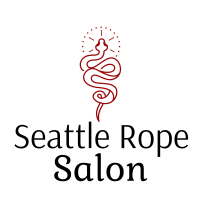Physics: Shearing Force
These are my notes from Riccardo Wildties’ lecture on shearing force. Check out http://kinbakuluxuria.com/dir/ for resources and inspiration.
Pressure and Friction alone are not detrimental to nerves and vessels, but when you combine them it produces a shearing force which can damage these structures. A classic aesthetic pose in kinbaku is the torsion of the torso, which is a primary example of this force. While beautiful, it is risky.
Shearing is unavoidable, but we can strive to control it. Shapes are either floating, falling, rising, or hanging and we tie our harnesses to the aesthetic effect we desire to have. For example, the stemless V-shape Takatekote (TK) harness functions well when pulled upward, but downward pressure, such as when a person is inverted on their TK line causes significant distortion which can threaten nerves. In this case it may be wise to avoid a deep V-shape, and go for more perpendicular lines (Perhaps Akechi, Kanna, Kinoko style harnesses are better suited.)
Important considerations of shearing are:
Angle x Directionality of load are more critical than rope tension.
V-shapes are vulnerable (low-hand TK’s, stemless TK, arm-binder)
Perpendicular stability are critical to mitigate risks. (cinching + kannuki)
Angular Force is more than load distribution, its about pressure and friction.
Biological variables: a)elasticity of skin (squish) increases shear,
b) more muscular=less shearing ; c) hypermobile=more shearing (in this case, the TK should incorporate a waist rope to prevent the shoulders lifting into the dangerous shrug posture)
Shearing has effects that are both superficial and deep



